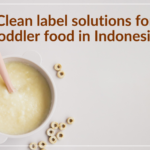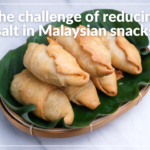The health and wellness trends explain consumers’ behaviors regarding what and how they eat. But good health is no longer the main goal to reach. Authenticity, transparency and environmental concerns catch up with nutritional quality and naturalness on the podium of important attributes for consumers. This has led to the clean and clear labeling trends with global sales reaching approximately USD165 billion, or 9% of total sales in 2015[1].
Clean label: a solid and growing trend switching to a standard
Consumers’ expectations are quickly evolving. Indeed, about 70% of them are willing to pay more for a product that offers complete transparency[2]. Besides, a 2018 survey[3] showed that 75% of them are more likely to change for a brand that provides more in-depth product information beyond what is provided on the label (vs “only” 39% in 2016). In some cases, consumers are more interested in knowing what is not included than what is included in the products they buy. In fact, 53% of consumers say that the exclusion of undesirable ingredients is more important than the inclusion of beneficial ingredients!
The consumers’ trust regarding products they buy can be challenging to get, which explains the birth of many reinsurance certifications and labels.
Clean label is switching from a trend to a standard. Consumers are looking for simpler, healthier, minimally processed food and for labels with ingredients they can understand.
To meet consumers’ expectations, the food industry is clearly focusing on transparency efforts. It needs ingredients in line with this approach. Yeast extract is a solution of choice to develop clean label, healthy and flavorful food!
Clean label and naturality are strongly linked
Neither clean label nor naturality have clear definitions. Both notions include various overlapping parameters. In fact, clean label is constantly evolving (to become clear label). It engages a clear, understandable and short labeling for the consumer. And it ncludes all sustainability and traceability aspects that accompany a product. It is also linked to a quality sourcing of ingredients coming from “natural” origin: plants, seeds, vegetables, animals… and which are minimally processed! In 2017, perceptions towards the « clean label » concept, especially by younger consumers, were coalescing around products that are natural or organic[4].
Natural claims are reassuring for consumers. They see them as a guarantee for healthy and environmentally friendly food: 10 years ago, only 30% of consumers considered that a food or beverage containing only natural ingredients could influence their purchase decision. Today they are more than 65%[5].
Biospringer’s yeast extract perfectly fits the clean label trend
As a natural origin ingredient mostly used to improve the overall taste of foods, yeast extract is also efficient in balancing and preserving taste when food formulators come to reduce components of a recipe such as salt or undesirable ingredients. Yeast extract is in line with the clean label trend.
Yeast extract comes from one ancestral ingredient, fresh yeast – the very same that has been used for thousands of years to make everyday consumer products such as beer, wine or bread. It is obtained by fermentation, followed by a few physical treatment steps and its production is carried out without adding additives. Accordingly, yeast extract can therefore be easily incorporated in a large spectrum of food application with a clean label approach.
Yeast extract is an attractive solution to reassure consumers and underline the clean label positioning of a finished product. Moreover, to get a result, very small quantities are usually used in food recipes (usually less than 1%). Interesting to favor major ingredients and continue to reassure consumers!
There is no doubt that food manufacturers will find with Biospringer’s product range the ingredients that they need to make their recipes flavorful, healthier, and cleaner.
To get more insights,
- Clean label product sales worldwide and in North America in 2015 (in billion U.S. dollars), Statista 2016
- http://www.ift.org/food-technology/newsletters/ift-weekly-newsletter/2017/august/083017.aspx
- Food Business Review, Quantifying the value of transparency, 2018 – https://www.foodbusinessnews.net/articles/12532-quantifying-the-value-of-transparency
- 2017 Emerging trends in Natural and Organic Foods and Drinks – GlobalData
- NMI H&W Study 2017 (Supply Side West 2017)









